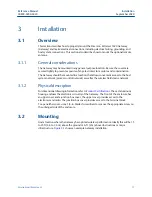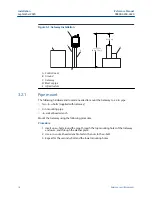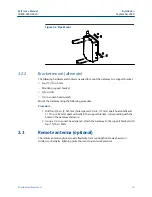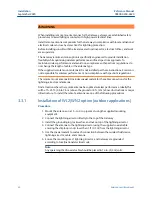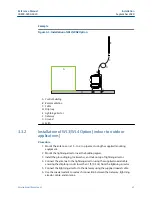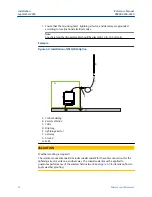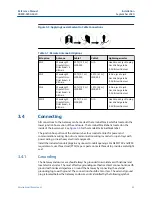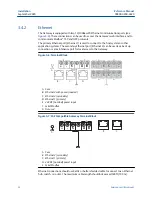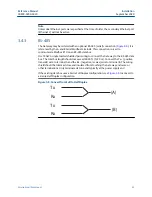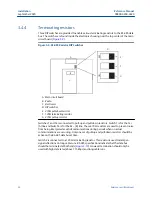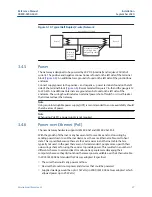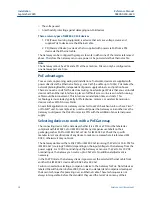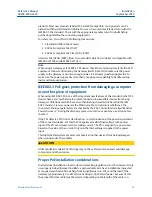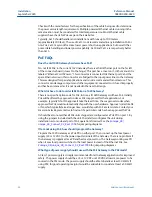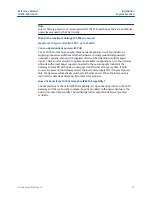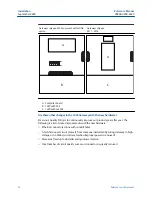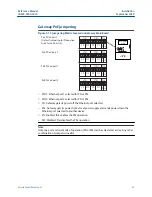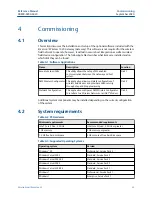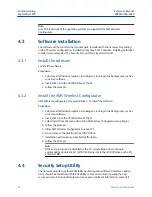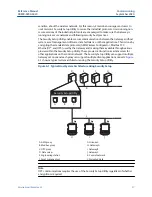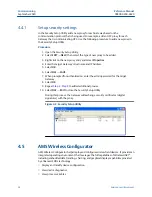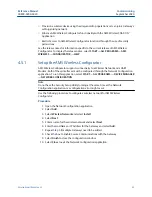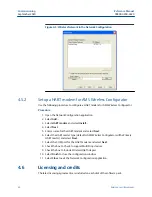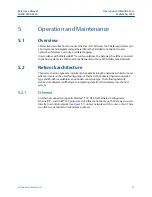
•
The voltage used
•
A method of protecting against damaging non-PoE devices
There are two types of IEEE 802.3 PoE devices
1. PSE (Power Sourcing Equipment) is a device that acts as a voltage source and
supplies PoE to devices via the Ethernet cable.
2. PD (Powered Device) is a device that is supplied with power via PoE from a PSE
device via the Ethernet cable.
The Gateway can be configured by jumpers to work in either one of the modes referenced
above. Therefore the Gateway can source power or be powered via the Ethernet cable.
Note
The Gateway cannot be a PSE and a PD at the same time. PoE can only be configured on
one Gateway port at a time.
PoE advantages
To save costs on planning, wiring and installation of networks, devices are supplied with
power directly via the Ethernet cable (e.g. via a Cat 5/5e cable up to 100m). PoE makes the
network planning flexible, independent of power supply cabinets, and junction boxes.
There are no extra costs for the electrical wiring. An advantage of PoE is that you can install
devices with an Ethernet interface in places of difficult access or in areas in which running
cable would be inconvenient. This in turn saves installation time and costs. This
technology is in use today typically in IP telephones, cameras, or wireless transmission
devices such as WLAN Access Points.
An excellent application is a Gateway connected to a Wi-Fi back haul unit; such as a Cisco
®
or ProSoft
®
unit. For example a Cisco unit could power the Gateway or in another case the
Gateway could power the ProSoft unit as in a PFN with the addition of an external power
supply.
Selecting devices to work with a PoE Gateway
The connecting device to the Gateway whether it is a PSE or a PD must be labeled as
compliant with IEEE 802.3af or IEEE 802.3at. Many companies use labels on their
packaging such as PoE for IEEE 802.3af or PoE+ for IEEE 802.3at. Check the specific
manufacturer's specifications of any device to make sure somewhere it references IEEE
802.3; otherwise it may not work.
The Gateway works as either a PoE PSE for IEEE 802.3af (sourcing 15 Watts) or PoE+ PSE for
IEEE 802.3at (sourcing 25 Watts) depending on the input voltage to the Gateway from the
power supply. For 12 VDC nominal input, the Gateway can source 15 Watts. For 24 VDC
nominal input, the Gateway can source up to 25 Watts. No additional adjustment is
necessary.
In the PoE PD mode, the Gateway draws its power over the selected Ethernet cable from
another PoE IEEE 802.3 device either 802.3af or 802.3at.
Caution is needed in selecting a companion device to the Gateway for PoE. Not all devices
labeled PoE will function. Before 2003, there was no standard and companies developed
their own techniques for powering over an Ethernet cable. These techniques are not
always interoperable. Before the standard, they used the term PoE on many of their
Installation
Reference Manual
September 2020
00809-0200-4420
28
Emerson.com/Rosemount
Summary of Contents for Smart Wireless Gateway 1420
Page 1: ...Reference Manual 00809 0200 4420 Rev HE September 2020 Emerson Wireless 1420 Gateway ...
Page 34: ...Installation Reference Manual September 2020 00809 0200 4420 34 Emerson com Rosemount ...
Page 42: ...Commissioning Reference Manual September 2020 00809 0200 4420 42 Emerson com Rosemount ...
Page 62: ...Troubleshooting Reference Manual September 2020 00809 0200 4420 62 Emerson com Rosemount ...
Page 84: ...DeltaV Ready Reference Manual September 2020 00809 0200 4420 84 Emerson com Rosemount ...
Page 95: ...Reference Manual 00809 0200 4420 September 2020 Emerson com Rosemount 95 ...




